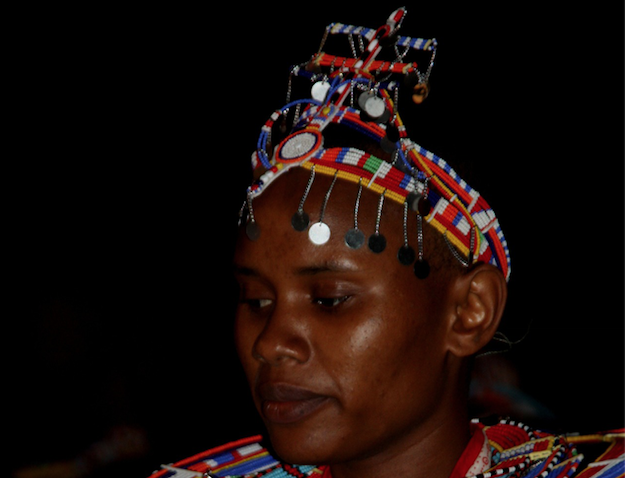
These beads are not just fashion. They tell stories about who someone is, what they believe and how they feel about themselves. They are forms of artistic expression just like poetry and music.
In a world that often judges women by how they dress or look, some young women are using these beads to take back control. They want to feel free and proud of their bodies. They want to celebrate African beauty. And they want to feel connected to their history.
My Mpesa agent told me, “When I wear my waist beads? I feel rooted. It’s like wearing a story from my grandmother’s time, but also making it my own.”
Waist beads and ankle chains have long histories in African cultures. Among the Mijikenda, Luhya and Turkana communities, young girls wore beads to show they had become women.
The beads marked stages in life. These include fertility, readiness for marriage or a rite of passage. Back then, these items were worn in private and carried deep meaning.
But things have changed. Today’s youth wear beads for different reasons.
Some wear them to feel sexy, others for fun and many as a quiet form of
resistance.
These beads are no longer just private. They are now worn boldly, even shared on social media. Instagram, TikTok and X (formerly Twitter) are filled with photos and videos of girls dancing, walking or posing with beads showing at the waist or ankles.
A sophomore mentee told me, “After my breakup, I bought my first ankle chain. It made me feel like I was starting over. Like I was free again.” Her story is one of many where young people use these small items to express big emotions.
For many, beads are not just ornaments. They are symbols. They tell others that the person wearing them is confident, aware and proud. They also question the idea that the young female body must be hidden or silent. Through their navel area beads, young women are saying, “This is me. And I have nothing to hide.”
In the past, older generations saw ankle chains in particular as bad signs. An elderly church elder told me last Sunday, “When I see a woman with an anklet, I think she’s trying to send a sexual message.” These views were shaped by strict moral codes. But today, the youth see things differently. They are asking, “Why should a woman be ashamed of her body?” or “Why can’t beauty and culture be visible?”
Gen Z, especially, has grown up in a digital world. They curate their
lives online — how they dress, dance, speak and present themselves. Hashtags
like #waistbeadsoftiktok and #anklechainszn help them connect with others
around the world.
A girl in Nairobi may share her look and be liked or commented on by someone in Accra, Harlem or Johannesburg. This creates a kind of digital family. Think of a community where Black girls across the globe celebrate their heritage together virtually.
The story doesn’t stop with fashion or social media. Many youth today are also involved in important conversations around feminism, body rights and mental health. Some girls say wearing beads helps them love their bodies more. A niece told me, “My waist beads remind me I don’t have to look like the girls in magazines. I just have to feel good in my skin.”
Others wear them to heal. Some wear them to mark growth. Some use them as a sign of moving on. Each bead can hold a private meaning. But taken together, the act of wearing them becomes public. It becomes a performance. Like an artiste on stage, the wearer is saying something through what they wear, how they move and what they choose to show.
This idea matches what some scholars say about identity. Philosopher Judith Butler wrote that identity is something we perform. We don’t just “have” it: We show it in what we say, do or wear. A girl dancing on TikTok with her ankle chains showing is not just entertaining. She is writing a short story with her body.
Still, not everyone is happy with this change. Some older people feel that beads have lost their value. “They are no longer sacred,” an elder in my home area said. “Now they’re just for show.”
This difference in opinion shows the gap between generations. The elders
may want to keep tradition the same. But the youth believe tradition grows with
each new voice that joins it.
This change also raises other questions. Many vendors now sell beads online with names like “Afro-chic” or “spiritual beads”. They market them as items of fashion, not culture.
Does this make them less meaningful? Some say yes. They argue that turning beads into a trend kills their deeper purpose. But others disagree. “It’s not where I bought it that matters,” said one university girl. “It’s why I wear it.”
For many wearers, the intention behind the beads is what gives them power. Even if bought from a shop, if the beads help a girl heal, feel beautiful or tell her truth, then they still matter. Meaning doesn’t come from the shop. It comes from the heart.
So, what does all this mean for the future?
It means that literature is not just found in books. It can be found on skin. It means that stories can be told not only with words but with colour, rhythm and movement. These beads are quiet poems. The ankle chains are small songs. Together, they form a new kind of writing. It is a symbolic writing that lives on the body.
In this way, our youth are building a new tradition. They are not simply repeating the past. They are reshaping it. They are creating a future where beauty, culture and freedom walk side by side.
To scholars and artistes, this should be a wake-up call. We must learn to listen with our eyes. We must read not just books but bodies. And we must understand that sometimes, the deepest stories are the ones told without speaking.














